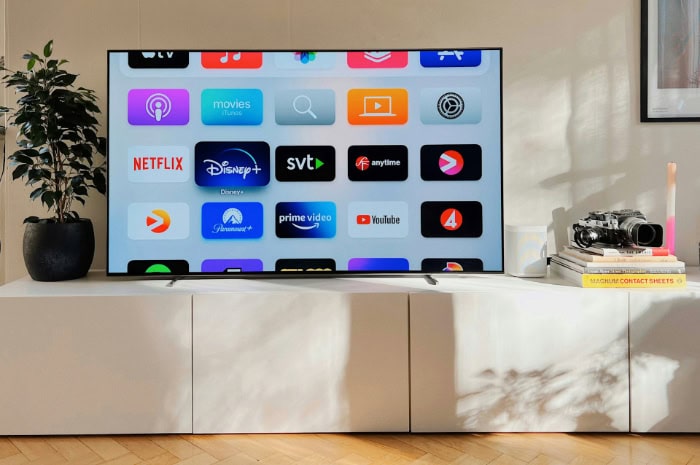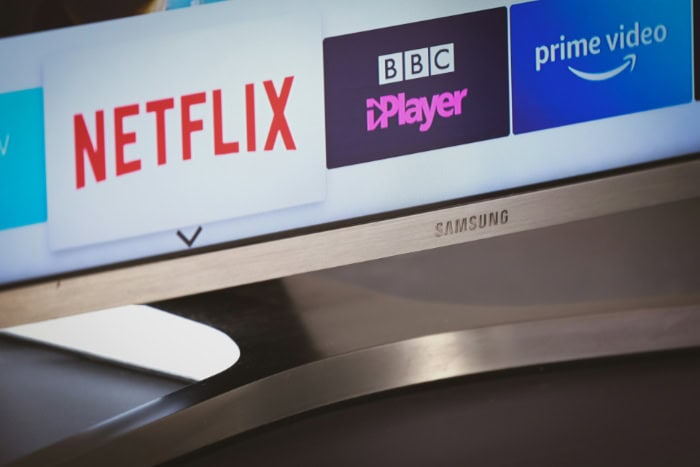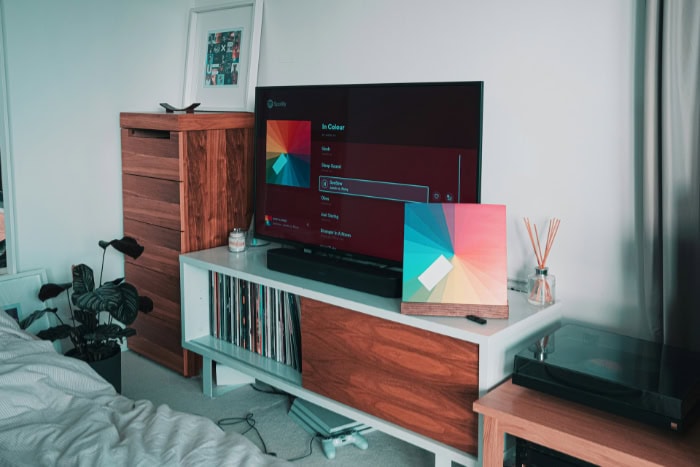QLED vs. Crystal UHD: Behind The Price Gap

In the realm of home entertainment, the television reigns supreme. As the centerpiece of living rooms worldwide, TVs have evolved to keep pace with our insatiable appetite for captivating visuals and immersive experiences.
Two of the most prominent players in this arena are Samsung's QLED and Crystal UHD technologies.
Technology Foundation
To grasp the distinctions between QLED and Crystal UHD, it's essential to examine the technological foundations that underpin these display technologies. While both fall under the broader category of LED-based displays, they employ different approaches to enhance picture quality and deliver captivating visuals.
Quantum Dot Layer
QLED, or Quantum Light-Emitting Diode, sets itself apart through its implementation of a quantum dot layer. Quantum dots are nanoscale semiconductor particles that possess unique optical properties.
When exposed to light, these dots emit vibrant, pure colors determined by their size. In QLED displays, a film of quantum dots is placed between the LED backlight and the LCD panel.
As light passes through this layer, the quantum dots convert it into highly saturated, precise colors across the spectrum, resulting in a wider color gamut and increased color accuracy.
In contrast, Crystal UHD relies on a nanocrystal structure to enhance its display performance. These nanocrystals are ultra-fine particles that improve the transmission and refraction of light.
By integrating nanocrystals into the display panel, Crystal UHD aims to deliver better clarity, enhanced contrast, and more vivid colors compared to traditional LED displays.
While both technologies leverage nanoscale particles to elevate picture quality, the core difference lies in their specific implementation.
QLED's quantum dot layer focuses on expanding the color gamut and improving color accuracy, while Crystal UHD's nanocrystal structure prioritizes overall clarity and contrast enhancement.
Display Architecture
The display architecture of QLED and Crystal UHD plays a crucial role in determining their performance characteristics. Both technologies utilize LED backlighting systems to illuminate the display panel, but they differ in their approach to color reproduction and panel construction.
QLED employs a combination of blue LEDs and quantum dots to generate a wide array of colors. The blue LEDs serve as the primary light source, while the quantum dot layer converts a portion of that light into red and green wavelengths.
This process allows QLED displays to achieve a broader color gamut, covering a significant portion of the DCI-P3 color space used in the film industry.
Additionally, QLED panels often incorporate advanced local dimming techniques, enabling precise control over brightness and contrast in specific areas of the screen.
On the other hand, Crystal UHD relies on a more traditional LED backlight system, using white LEDs to illuminate the display panel. The nanocrystal structure enhances the light transmission and refraction, resulting in improved clarity and contrast.
However, without the quantum dot layer, Crystal UHD may have limitations in terms of color gamut and accuracy compared to QLED.
Panel construction is another aspect where QLED and Crystal UHD may diverge. QLED displays commonly employ VA (Vertical Alignment) panels, known for their deep black levels and high contrast ratios.
Crystal UHD, depending on the specific model, may utilize either VA or IPS (In-Plane Switching) panels, each with its own strengths and weaknesses in terms of viewing angles and color consistency.
Performance Metrics

Performance metrics are crucial factors that differentiate QLED and Crystal UHD technologies. These metrics encompass various aspects of picture quality and visual experience, allowing consumers to evaluate the strengths and limitations of each display technology.
Picture Quality
Picture quality is a fundamental aspect of any display technology, and both QLED and Crystal UHD strive to deliver exceptional visual fidelity. However, they achieve this goal through different means, resulting in distinct performance characteristics.
Color volume and accuracy are areas where QLED technology typically excels. The quantum dot layer in QLED displays enables a wider color gamut, allowing for more vibrant and accurate color reproduction.
This expanded color volume means QLED TVs can display a broader range of colors, resulting in more lifelike and immersive images.
Crystal UHD, while still capable of producing impressive colors, may not match the expansive color volume of QLED due to its reliance on traditional LED backlighting and nanocrystal structure.
Peak brightness capabilities are another critical factor in picture quality. QLED displays often boast higher peak brightness levels compared to Crystal UHD.
This increased brightness allows QLED TVs to deliver more impactful HDR content and maintain clarity in bright viewing environments. The quantum dot layer's efficiency in converting light contributes to this superior brightness performance.
Crystal UHD displays, while still capable of achieving good brightness levels, may not reach the same peaks as their QLED counterparts.
Black levels and contrast ratio are essential for creating depth and dimensionality in images. QLED displays, particularly those utilizing VA panels, often achieve deeper black levels and higher contrast ratios compared to Crystal UHD.
The combination of quantum dots and advanced local dimming techniques allows QLED TVs to produce inky blacks while maintaining bright highlights, resulting in a more dynamic and engaging picture.
Crystal UHD displays can still offer good black levels and contrast, especially in higher-end models, but may not consistently match the performance of QLED in this area.
Visual Experience
Beyond raw picture quality metrics, the overall visual experience encompasses several factors that contribute to viewer enjoyment and comfort.
HDR (High Dynamic Range) performance is a significant aspect of modern display technologies. QLED displays generally offer superior HDR performance due to their higher peak brightness and wider color gamut.
This translates to more impactful HDR content with brighter highlights, deeper shadows, and more nuanced color gradations. Crystal UHD displays can still provide satisfying HDR experiences, but they may not achieve the same level of intensity and color volume as QLED.
Viewing angles are an important consideration, especially for those with large seating areas. The performance in this area can vary depending on the specific panel technology used.
QLED displays typically use VA panels, which offer excellent contrast but may experience some color shift and brightness loss when viewed from off-center angles.
Crystal UHD displays may use either VA or IPS panels, with IPS offering better viewing angles but potentially sacrificing some contrast.
It's worth noting that some high-end QLED models incorporate additional technologies to improve viewing angles.
Motion handling is crucial for smooth playback of fast-moving content, such as sports or action movies. Both QLED and Crystal UHD technologies can offer good motion performance, with factors like refresh rate and motion processing playing a significant role.
High-end models in both categories often feature advanced motion handling capabilities, including higher refresh rates and sophisticated motion interpolation algorithms.
However, individual model specifications and implementations can vary, so it's essential to consider specific features when evaluating motion performance.
Real-World Applications

The true value of QLED and Crystal UHD technologies becomes apparent when considering their performance in real-world scenarios. From entertainment to practical usage, these display technologies offer distinct advantages and potential drawbacks that can significantly impact the user experience.
Entertainment
Entertainment forms a substantial part of most users' TV experiences, encompassing a wide range of content types and viewing scenarios.
Movie and streaming content benefit greatly from the enhanced picture quality offered by both QLED and Crystal UHD technologies. QLED displays, with their wider color gamut and higher peak brightness, excel in delivering vibrant and immersive cinematic experiences.
The technology's ability to reproduce a broader range of colors allows for more accurate representation of filmmakers' intended color palettes, particularly in HDR content.
This can result in more lifelike skin tones, richer landscapes, and more impactful special effects.
Crystal UHD, while perhaps not matching QLED's color volume, still offers impressive picture quality for movie enthusiasts. Its enhanced clarity and contrast can provide sharp, detailed images that bring films and TV shows to life.
Gaming performance is another crucial aspect of entertainment where QLED and Crystal UHD displays showcase their strengths. QLED technology often provides an edge in this area due to its superior brightness and color performance.
This can lead to more visually striking game worlds and improved visibility in dark scenes. Additionally, many high-end QLED models feature gaming-specific technologies such as variable refresh rates and low input lag, which contribute to smoother gameplay and more responsive controls.
Crystal UHD displays can still offer satisfying gaming experiences, especially in models equipped with gaming-oriented features. However, they may not match the visual impact of QLED in terms of color vibrancy and brightness.
Sports viewing experiences can benefit from both technologies, but in slightly different ways. QLED's higher brightness capabilities can be particularly advantageous for daytime sports viewing, helping to maintain picture clarity even in well-lit rooms.
The technology's typically superior motion handling can also contribute to smoother playback of fast-paced sports action. Crystal UHD displays, while potentially not as bright, can still deliver clear and detailed sports content.
Some Crystal UHD models may even offer better viewing angles, which can be beneficial for group sports watching sessions.
Practical Usage
Beyond entertainment, practical considerations play a significant role in the overall user experience of QLED and Crystal UHD displays.
Bright room performance is an area where QLED technology often shines, quite literally.
The higher peak brightness capabilities of QLED displays make them well-suited for use in brightly lit environments. This means that QLED TVs can maintain picture quality and visibility even when faced with significant ambient light, such as in living rooms with large windows.
Crystal UHD displays, while still capable of good performance in moderate lighting conditions, may struggle more in very bright settings. However, some Crystal UHD models incorporate anti-glare technologies that can help mitigate this issue to some extent.
Power consumption is an important factor for environmentally conscious consumers and those concerned about energy costs. In this regard, Crystal UHD displays often have an advantage.
The simpler backlight structure of Crystal UHD typically results in lower power consumption compared to QLED displays, especially when operating at high brightness levels.
QLED technology, while energy-efficient in its own right, may consume more power due to its additional quantum dot layer and potentially higher peak brightness capabilities.
However, it's worth noting that power consumption can vary significantly between individual models and depends on user settings.
Screen burn-in resistance is a consideration for users who frequently display static content or watch channels with persistent logos. Both QLED and Crystal UHD technologies generally offer good resistance to burn-in compared to OLED displays.
The LED backlighting used in both technologies helps to mitigate the risk of permanent image retention.
However, QLED may have a slight edge in this area due to the nature of quantum dots, which are less susceptible to degradation over time compared to traditional phosphor-based LEDs.
Nonetheless, both technologies can be considered reliable choices for users concerned about burn-in, especially when compared to other display technologies.
Cost Considerations

When choosing between QLED and Crystal UHD displays, cost considerations play a crucial role in the decision-making process. These considerations encompass not only the initial purchase price but also long-term value factors that can impact the overall cost of ownership.
Initial Investment
The initial investment for a QLED or Crystal UHD display can vary significantly based on several factors. Generally, QLED technology commands a premium price due to its advanced features and superior performance characteristics.
This price difference is most noticeable in the mid-range to high-end segments of the market, where QLED displays often cost more than their Crystal UHD counterparts with similar specifications.
Price range comparisons between QLED and Crystal UHD displays can be complex due to the wide variety of models available from different manufacturers. However, as a general rule, entry-level QLED models may overlap in price with mid-range Crystal UHD options.
At the higher end of the spectrum, premium QLED displays can command significantly higher prices than top-tier Crystal UHD models.
Size options play a significant role in the cost of both QLED and Crystal UHD displays. Both technologies are available in a wide range of sizes, typically starting from around 43 inches and extending to 85 inches or larger for home use.
As expected, larger sizes come with higher price tags.
It's worth noting that the price difference between QLED and Crystal UHD tends to become more pronounced as screen size increases, with larger QLED displays often carrying a more substantial premium over their Crystal UHD counterparts.
Feature set variations can also impact the initial investment. Both QLED and Crystal UHD displays offer a range of features that can affect their price.
These may include advanced smart TV platforms, voice control capabilities, gaming-specific features, and audio enhancements.
QLED models, particularly those in the higher end of the range, often come with more extensive feature sets, which contributes to their higher price points.
Crystal UHD displays, while still offering many modern features, may have more basic implementations or fewer premium features in comparably priced models.
Long-term Value
While the initial purchase price is important, considering the long-term value of QLED and Crystal UHD displays provides a more complete picture of their cost-effectiveness over time.
Durability is an essential factor in long-term value. Both QLED and Crystal UHD technologies are generally considered durable and long-lasting.
The LED backlighting systems used in both types of displays typically have long lifespans, often rated for tens of thousands of hours of use.
QLED displays may have a slight edge in terms of long-term picture quality retention due to the stability of quantum dots, which are less prone to degradation over time compared to traditional LED phosphors.
However, both technologies can be expected to maintain good picture quality for many years with proper care.
Energy efficiency is another important consideration for long-term value. As mentioned earlier, Crystal UHD displays often have an advantage in this area.
Their simpler backlight structure typically results in lower power consumption, which can lead to reduced electricity costs over the life of the TV.
QLED displays, while still energy-efficient, may consume more power due to their additional quantum dot layer and potentially higher brightness capabilities.
However, the actual energy consumption can vary significantly between individual models and depends heavily on user settings and viewing habits.
Maintenance requirements for both QLED and Crystal UHD displays are generally minimal. Neither technology requires specialized maintenance beyond basic care such as regular cleaning and avoiding physical damage.
Both types of displays are resistant to image retention and burn-in, which means they don't require special precautions to prevent these issues. This low maintenance nature contributes positively to their long-term value proposition.
It's important to note that the overall long-term value of a QLED or Crystal UHD display also depends on how well it meets the user's needs over time.
A more expensive QLED display might provide better value for a user who prioritizes picture quality and is likely to keep the TV for many years.
Conversely, a more affordable Crystal UHD model could offer better value for someone who updates their TV more frequently or has less demanding viewing requirements.
Conclusion
QLED and Crystal UHD technologies offer distinct advantages and considerations for those seeking a high-quality television. While both deliver impressive visuals, QLED's quantum dot layer enables a wider color gamut, higher peak brightness, and superior HDR performance.
Crystal UHD, with its nanocrystal structure, enhances clarity and contrast while maintaining a more affordable price point. Factors such as viewing environment, content preferences, and budget play crucial roles in determining the best fit for individual needs.
For viewers prioritizing exceptional picture quality, particularly in HDR content and gaming, QLED stands out as the top choice. Its ability to produce vibrant colors, deep blacks, and bright highlights creates an immersive viewing experience.
However, this advanced technology comes with a higher price tag, especially in larger screen sizes and premium models.
Crystal UHD presents a compelling option for those seeking a balance between performance and affordability. While it may not match QLED's color volume and brightness, Crystal UHD still delivers sharp, detailed images with good contrast.
Its lower power consumption and often more accessible price range make it an attractive choice for budget-conscious consumers.
Ultimately, the decision between QLED and Crystal UHD depends on personal preferences, viewing habits, and financial considerations.


